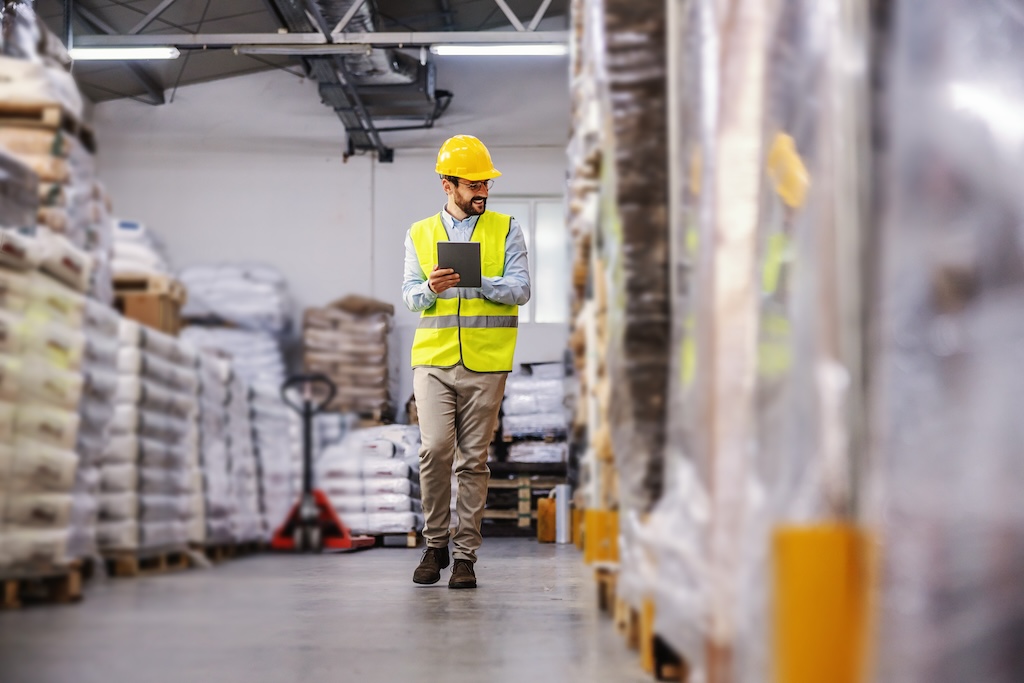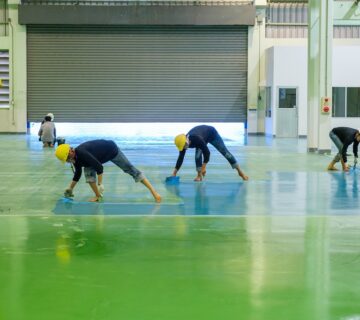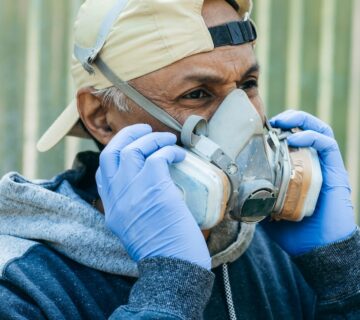Painting a warehouse is a large-scale project that requires careful planning, particularly with regard to safety. The unique environment of a warehouse presents specific challenges that must be meticulously addressed to ensure everyone’s safety. These challenges include navigating large open spaces, dealing with industrial equipment, and rigorously following all safety protocols. Conducting a comprehensive risk assessment should be the first step in the planning process to identify and mitigate potential hazards.
Prioritizing Worker Safety
The safety of the painting crew and warehouse employees is paramount. It is essential that all personnel be equipped with appropriate safety gear, including helmets, safety glasses, gloves, and harnesses if working at heights. Beyond providing the right equipment, conducting thorough safety briefings and comprehensive training sessions before starting the project is crucial. Creating and maintaining a safety-oriented culture, reinforced by regular reminders and checks, can significantly reduce the likelihood of accidents.
Dealing with Heights
Painting in a warehouse often involves working at heights, which presents a significant risk. The use of ladders, scaffolding, and aerial lifts must comply with strict safety regulations. Workers need proper training on how to use this equipment safely to prevent falls and injuries. Additionally, regular inspections of equipment for any faults or wear and tear should be conducted to maintain a safe working environment.
Ventilation and Air Quality
Good ventilation is crucial, particularly when using paints that emit fumes. It’s important to ensure that the warehouse is well-ventilated to prevent the buildup of toxic fumes, which can be harmful to workers’ health. This may involve the use of fans, ventilation systems, or temporary openings to ensure a continuous supply of fresh air. Furthermore, regular monitoring of air quality during the painting process can help maintain a safe environment for all workers.
Fire Safety
Given that some paints and solvents are flammable, you must strictly adhere to fire safety measures. This includes safely storing materials, ensuring proper disposal of rags and waste, and placing fire extinguishers at strategic locations. Train workers in fire safety protocols, including how to properly handle and store flammable materials and the appropriate actions to take in the event of a fire. Moreover, regular inspections and maintenance of safety equipment are crucial to ensure their functionality in emergency situations.
Managing Traffic and Work Zones
In an operational warehouse, managing the flow of people and machinery around the painting area is critical. Setting up clear work zones and using signage to direct traffic can help prevent accidents. Temporary barriers may be necessary to segregate the painting area from active warehouse zones. It is also important to schedule painting during less busy times, if possible, to minimize interaction between painting operations and regular warehouse activities.
Chemical Safety
Handling paint and solvents safely is crucial in warehouse painting. This involves proper storage, handling, and disposal of these materials, as well as training workers on how to manage spills and exposure. Material Safety Data Sheets (MSDS) should be readily accessible, and workers must be familiar with the information they contain. Additionally, emergency procedures for dealing with chemical spills should be well-established and practiced regularly to ensure safety and preparedness.
Communication and Training
Maintaining safety throughout the painting project relies heavily on effective communication and comprehensive training. Hold regular safety meetings to discuss ongoing concerns, and post clear signage to warn of potential hazards. Train all workers to recognize hazards and understand the procedures for reporting and responding to them. Moreover, establish a clear line of communication for workers to immediately report unsafe conditions.
Final Thoughts
Safety should always be the top priority in warehouse painting projects. By thoroughly addressing the unique challenges of the warehouse environment and implementing stringent safety measures, you can effectively minimize risks. A well-planned approach to safety ensures that the painting project not only improves the space’s appearance but also is conducted without compromising the health and well-being of the individuals involved. With careful attention to these considerations, you can safely complete a warehouse painting project with excellent results. For more insights on safe painting practices and professional painting services, visit our website at sisupainting.com and our blog at sisupainting.com/blog.





No comment